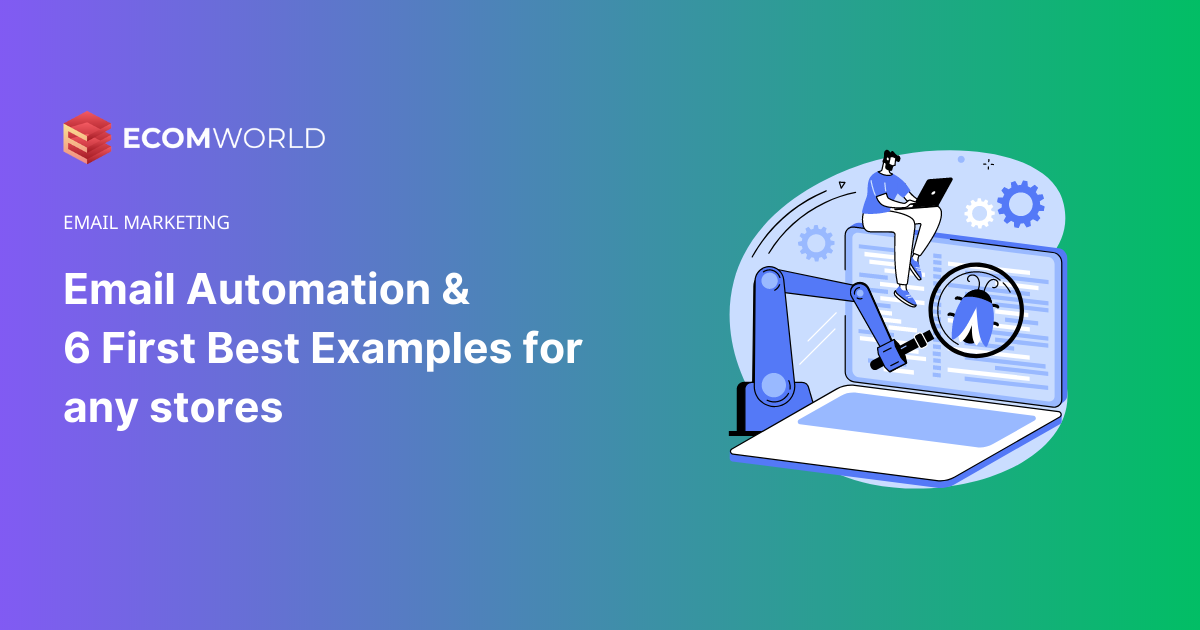Email automation refers to the utilization of predetermined rules in email or marketing automation software to send personalized messages based on specific actions or inactions taken by customers. This approach involves automating various email processes, such as sending welcome emails when a customer joins a mailing list, providing recommendations for similar products after purchase, or sending a gentle reminder to customers who abandoned their shopping carts without completing the purchase. By employing email automation, repetitive tasks can be handled automatically, allowing you to allocate your time to more valuable responsibilities, like addressing customer inquiries. This technique aids in enhancing customer familiarity with your brand, fostering customer loyalty, and reinforcing the reasons behind their initial purchase.
For business owners, it’s crucial to find ways to conserve valuable resources, especially time. Your focus should be on growing your business rather than spending excessive time on tasks like email sending and customer service inquiries. There are certain responsibilities that you shouldn’t have to handle single-handedly, and one of them is email marketing. Thankfully, email automation provides a solution that can save you both time and money.
Email automation involves utilizing predefined rules within email or marketing automation software to trigger email messages and customize them based on specific actions (or lack thereof) taken by customers. This approach offers various benefits, such as automating welcome emails sent when a customer signs up for a mailing list, suggesting similar products after a user makes a purchase on your website, or sending a prompt reminder when a customer adds items to their cart but fails to complete the checkout process.
Email automation eliminates repetitive tasks from your agenda, allowing you to allocate your time to more important responsibilities, like promptly addressing customer inquiries. Furthermore, it serves as a valuable tool for marketers and business owners to maintain a strong connection with their customers. By leveraging email automation, you can ensure that the appropriate message reaches the intended recipients at the optimal moment, thanks to automated workflows. This approach proves highly effective for nurturing leads, fostering customer loyalty, and ultimately, driving sales from both potential and existing customers.
Table of Contents
What Is Email Automation?
Email automation streamlines the process of delivering targeted and timely emails by leveraging a marketing automation tool. By integrating your website analytics with your email marketing platform, you gain the ability to tailor your messages to specific individuals based on their behavior, preferences, and past purchases. This personalized approach enhances the relevance of your automated campaigns and improves each customer’s experience.
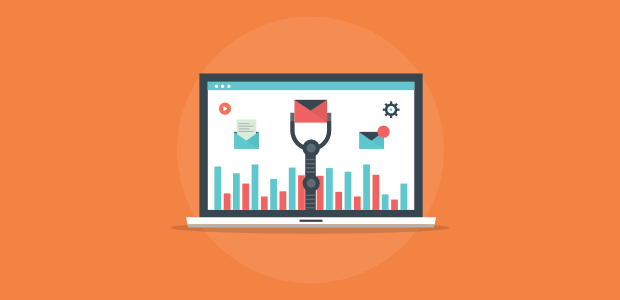
Benefits of Email Automation
The advantages of email automation are numerous, including:
- Saving time and effort by automating repetitive tasks.
- Ensuring emails reach the intended recipients with the appropriate content.
- Targeting customers based on their specific actions and interests.
- Increasing customer engagement and loyalty through personalized experiences.
- Maximizing the effectiveness of your marketing campaigns by delivering the right message at the right time.
- Enhancing customer relationships by providing relevant and valuable information.
- Driving conversions and sales by prompting customers with personalized recommendations.
- Gaining insights and data to optimize future marketing efforts based on customer responses and interactions.
Enhance the personalized experiences of your customers
Studies affirm what many marketers already understand: customers highly value personalization.
An overwhelming 90% of consumers find personalized content appealing to a significant extent. Email stands as the primary method employed by marketers to deliver personalized experiences. Through email automation, you can go a step further by creating a sequence of automated emails, fostering stronger connections with your customers and benefiting your business. This approach enhances the efficiency of email marketing as a channel throughout the sales funnel.
Leverage the potential of your marketing team
Automation is revolutionizing business operations across various teams. Specifically, for email marketing teams, this entails reducing the time spent on manual tasks like compiling email lists and scheduling messages. As a result, team members can redirect their efforts towards critical endeavors, such as cultivating deeper customer relationships and engagement.
Enhance customer retention rates
It is more cost-effective and easier to sell to existing customers compared to acquiring new ones. With email automation, you can maintain regular communication with your customers and ensure that your messages are relevant and impactful. By sending personalized and targeted emails that address their needs, such as notifying them about special offers or new product releases, you can increase the likelihood of customer engagement and retention. Email automation enables you to tailor your messages, fill customer needs, and ultimately bring back valuable customers.
Streamline your marketing team’s efficiency
Automation is transforming the way teams conduct business, and email marketing teams can benefit significantly from this shift. Instead of spending time manually compiling email lists and scheduling messages, email automation allows team members to focus on essential tasks, such as building in-depth customer relationships. By automating repetitive processes, team members can allocate their time and energy to more critical activities, leading to improved productivity and overall marketing team performance.
6 First Email Automation For Any Stores
Customer Thank You Emails
The initial email sent to a new customer serves as a prime example of email automation. Customer thank you emails boast an impressive 50% open rate, indicating that over 75% of recipients are more likely to open these emails compared to other marketing messages.
Based on this rationale, it is crucial to prioritize welcome emails as the first communication your newly acquired customer receives.
The purpose of a welcome email is twofold: to express gratitude and acknowledge the customer’s interest in your business, and to verify the authenticity of the recipient’s email address, thereby ensuring a healthy email list.
Depending on the available information, you can personalize the welcome email or send a generic version. Consider incorporating an onboarding checklist or sharing product tips to help customers familiarize themselves with your product, as demonstrated in this welcome email from Slack.
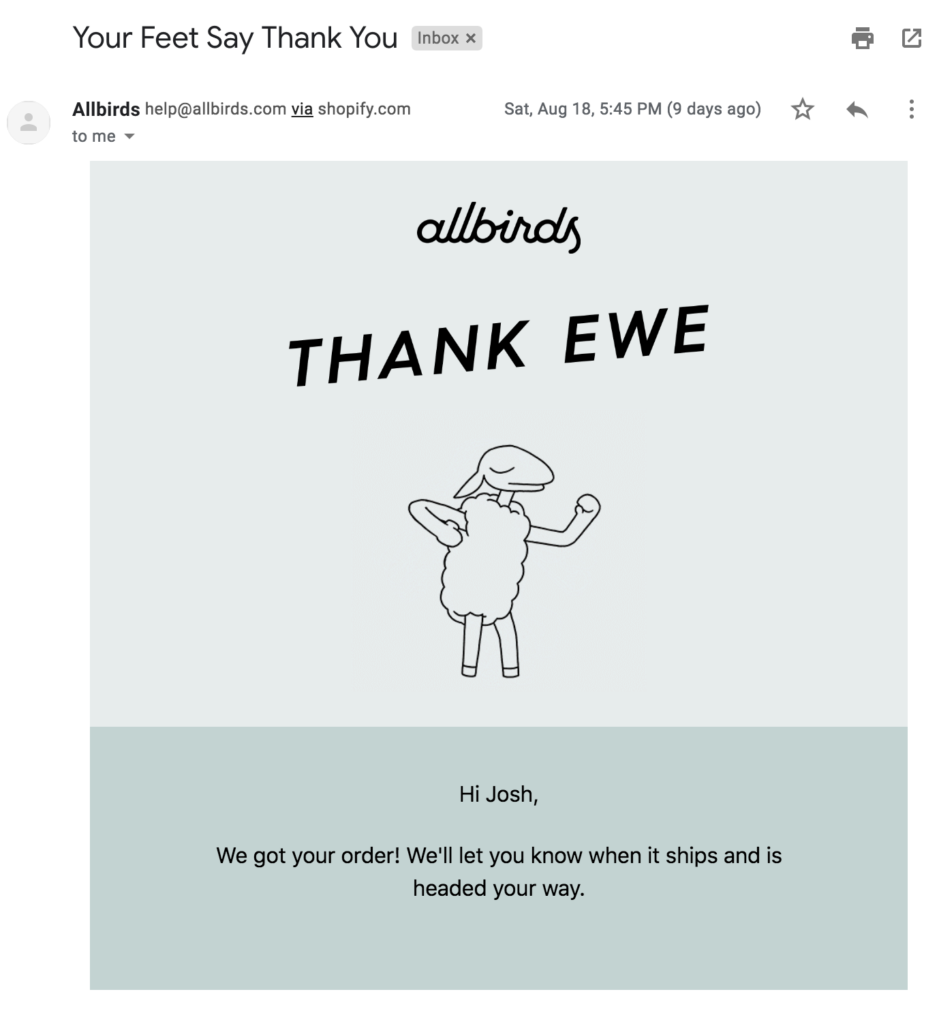
Welcome Emails to Pop-Up
The initial email you receive upon signing up, subscribing, or submitting your email to an online store is known as a welcome email. This email holds significance as it serves as the first interaction between a company and a new customer, blog subscriber, or newsletter subscriber via email. Welcome emails can contain various elements such as videos, exclusive offers, a registration form, or simply a warm greeting, all aimed at building a connection and establishing a relationship with the new contact.
When you send a welcome email to a new blog reader, newsletter subscriber, or customer, you represent your brand and create a first impression. To ensure that you leave a positive and memorable first impression, we have gathered a collection of exceptional welcome emails from both large and small brands as examples.
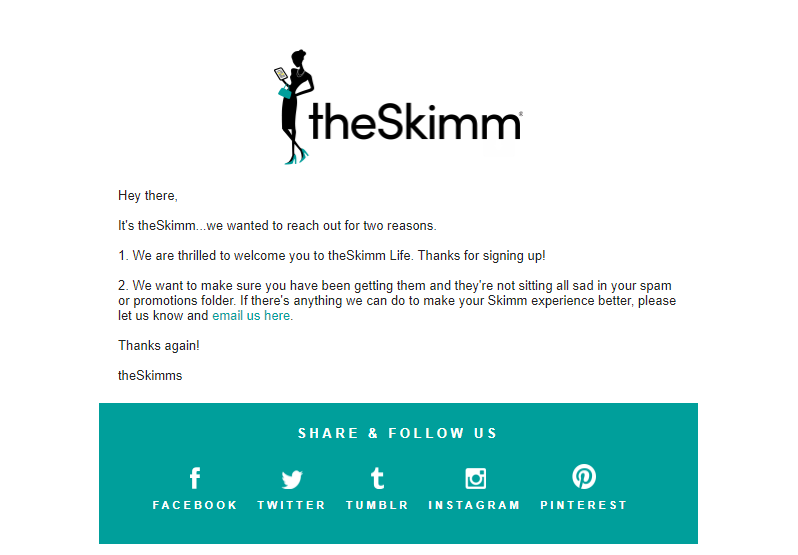
Abandoned Cart Emails
Another notable marketing automation example is the abandoned cart email. The issue of abandoned carts poses a significant challenge for every eCommerce store, resulting in substantial revenue loss. To put it in perspective, a staggering 69% of shoppers abandon their carts, meaning that sales figures are only a fraction of what they could potentially be.
This widespread problem has prompted eCommerce businesses to employ automated abandoned cart emails as a solution. By leveraging tactics like urgency and scarcity, marketers aim to recapture lost revenue. Setting deadlines for customers to take action proves effective, as prolonged delays often lead to missed opportunities for purchase. Additionally, offering discounts on the products in the cart serves as an incentive, as demonstrated in this email from Fabletics Men.
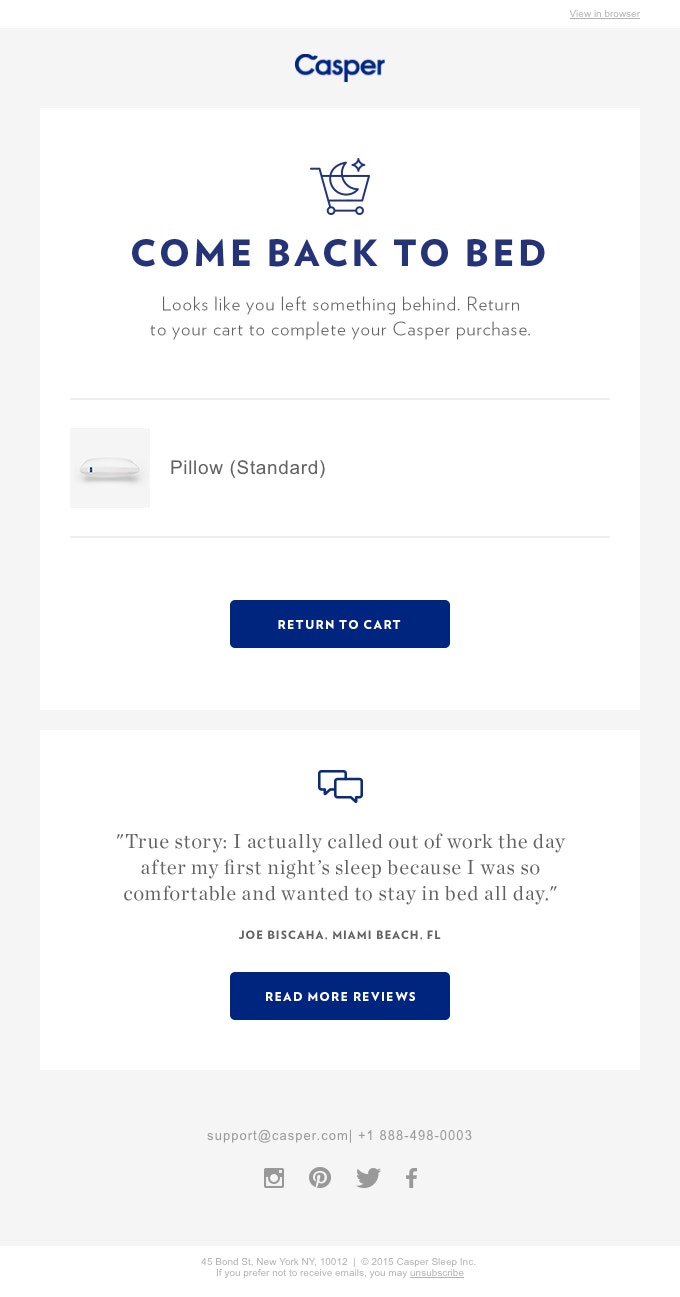
Birthday Emails
Sending birthday wishes to customers has become a customary practice, as it imparts a sense of care and concern from the brand. It serves as a valuable means to foster rapport and strengthen relationships with customers.
However, manually crafting individual birthday emails requires significant time and effort, which can detract from more critical marketing endeavors. This is where marketing automation comes into play, offering a solution.
With marketing automation, you can efficiently generate personalized birthday emails for your customers, freeing up time from repetitive tasks. Additionally, you have the opportunity to include special birthday gifts, such as discounts or vouchers, to express appreciation for your customer’s loyalty.
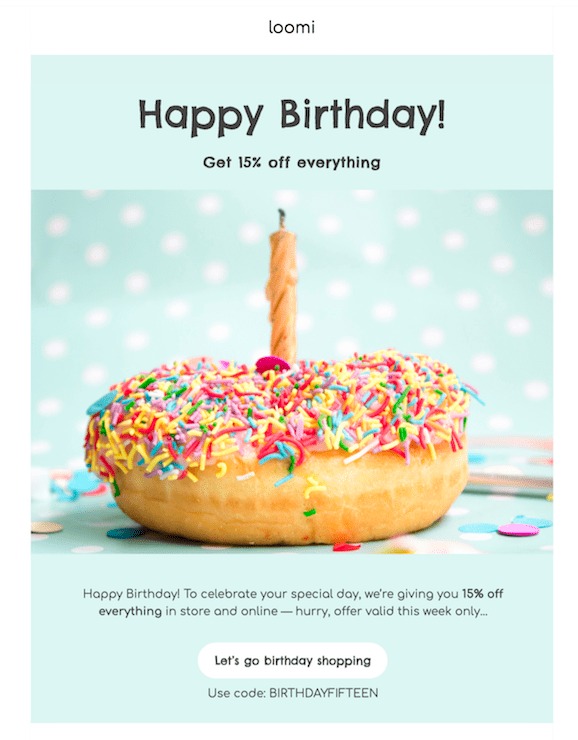
Winback Emails
A customer win-back email refers to a communication aimed at reigniting the interest of a subscriber who has stopped engaging with your previous emails by not opening or clicking through them. It is crucial for businesses to recognize the value of existing leads and not let them slip away without making an effort to reconnect with them. Implementing a win-back strategy allows you to re-engage these customers before it becomes too late.
You can identify when your customers become inactive and require a win-back strategy based on the following time frames:
- After 90 days of inactivity: This indicates that the customer’s interest in your brand is starting to wane.
- Between 90 and 120 days of inactivity: The customer is at a critical stage and is highly likely to lapse. It is crucial to take action to prevent losing them.
- Between 120 and 180 days of inactivity: The customer has already lapsed and is no longer engaging with your brand.

Survey & Feedback Emails
While survey and feedback emails may seem like a simple marketing automation example, they can play a significant role in addressing crucial business challenges. As previously mentioned, marketing automation empowers companies to gain data-driven insights into their customers and overall business operations.
By automating feedback emails, businesses can identify customer pain points and swiftly address them, thereby preventing customer churn. Furthermore, companies can stay attuned to evolving tastes and trends, allowing them to customize their messaging and product positioning accordingly. This adaptability ensures that businesses stay relevant and responsive to their target audience’s needs.
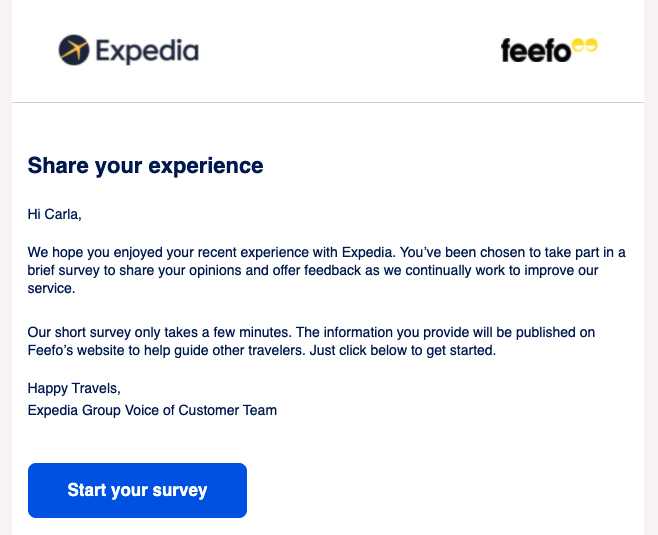
Email automation has transformed the way businesses connect with their customers, allowing them to automate repetitive tasks while delivering personalized, targeted, and timely messages. By implementing these six first-rate examples, any store can harness the power of email automation to boost efficiency, drive sales, and cultivate long-lasting customer relationships. Stay ahead of the competition and unlock the full potential of email marketing by incorporating these strategies into your business today.

